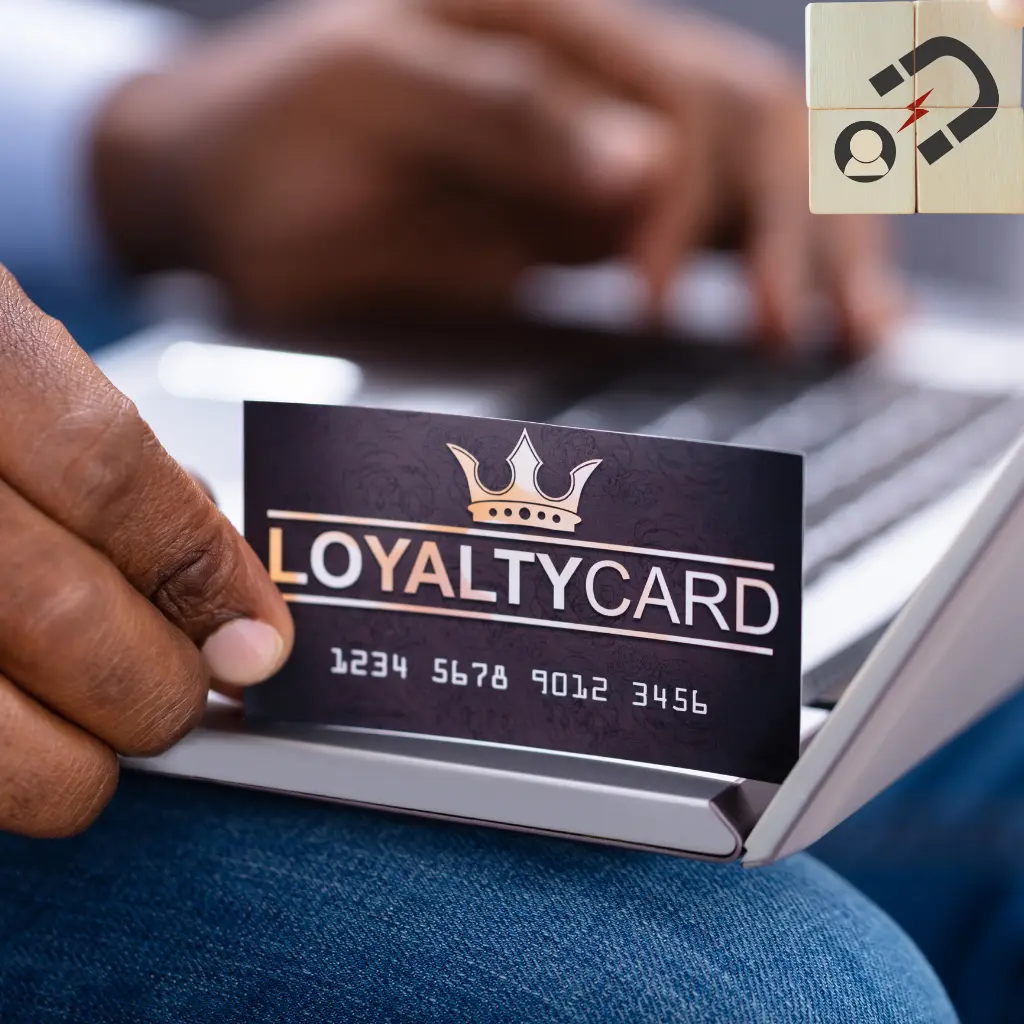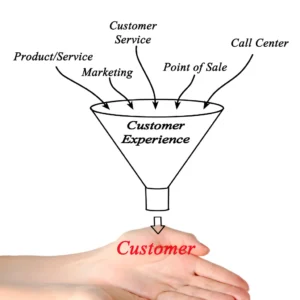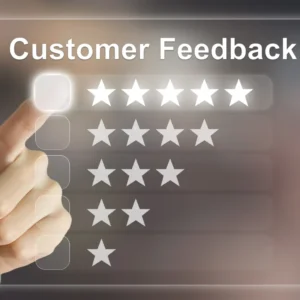
Elevating Loyalty
Unleashing the Power of AI in Retail's B2C Realm for Customer Retention Success
The article delves into the transformative realm of “Retail B2C Industry AI Tools for Customer Loyalty and Retention,” exploring how cutting-edge technologies reshape customer relationships and business strategies.
Integrating Artificial Intelligence (AI) tools has emerged as a game-changer in the dynamic retail landscape, where customer loyalty is paramount.
These tools revolutionize how businesses engage and retain customers, from personalized loyalty programs to predictive analytics.
This exploration will unveil the specific technical intricacies, the challenges faced, and the substantial benefits reaped by businesses venturing into this innovative intersection of retail and AI.
Join us on a journey through the technological landscape, where customer-centric AI tools redefine the essence of loyalty and retention in the B2C retail sector.
Table of Contents

Arindam Roy
An Automation Consultant with 25+ years of IT Experience
AI Tool ideas for Customer Loyalty and Retention Programs
AI-Powered Loyalty Programs:
- Integration with Loyalty Program Platforms: Ensure seamless connectivity with popular loyalty program platforms to centralize customer data and rewards.
- Machine Learning for Personalized Rewards: Develop algorithms that analyze customer behaviour to offer tailored rewards and incentives, increasing engagement.
- Real-time Updating of Offers: Implement real-time updates to loyalty program offers based on customer interactions and preferences.
Churn Prediction and Prevention:
- Machine Learning Models: Create predictive models using historical customer data to identify potential churners.
- Integration with Customer Databases and CRM Systems: Connect with existing customer databases and CRM systems to access comprehensive data for accurate predictions.
- Automated Interventions: Develop automated systems to intervene and offer personalized incentives to customers at risk of churning.
Subscription Box Personalization:
- Personalized Subscription Box Algorithms: Use machine learning algorithms to curate subscription boxes based on customer preferences, purchase history, and real-time changes in taste.
- Integration with Subscription Management Systems: Seamlessly integrate with subscription management systems to synchronize preferences and manage subscriptions effectively.
- Real-time Updating: Ensure that subscription box contents can be updated based on evolving customer preferences.
Recurring Purchase Prediction:
- Forecasting Recurring Purchases: Develop machine learning models to predict when customers will likely make recurring purchases.
- Integration with Customer Databases: Connect with customer databases to analyze historical data and personalize predictions.
- Automated Reminders and Incentives: Implement automated reminders and incentives to encourage and facilitate recurring purchases.
Customer Lifetime Value Optimization:
- Maximizing Customer Lifetime Value Strategies: Formulate strategies to enhance customer relationships and encourage long-term engagement.
- Integration with CRM Systems: Connect with CRM systems to get customer interactions and preferences for a holistic view.
- Continuous Optimization: Utilize machine learning to optimize strategies based on evolving customer behaviours and market trends.
Business Knowledge Requirements
Understanding specific business dynamics and customer-centric strategies is crucial to developing Retail B2C Industry AI Tools for Customer Loyalty and Retention. Here’s a detailed exploration of the non-technical knowledge requirements:
Market Understanding:
It is essential to have a deep understanding of the retail landscape, including market trends, customer behaviours, and competitive benchmarks. A deep understanding of consumer preferences, shopping patterns, and industry shifts will inform the customization of loyalty programs and retention strategies.
Customer Segmentation:
Successful B2C tools hinge on recognizing and segmenting customer demographics. Delineating distinct customer groups based on preferences, purchasing habits, and responses to loyalty programs allows for tailored approaches to enhance engagement and retention.
Competitive Analysis:
Conduct a comprehensive analysis of competitors to identify successful loyalty and retention strategies within the industry. Understanding what has worked or failed for similar businesses helps shape a unique value proposition and set realistic goals.
Business Goals Alignment:
Aligning AI tools with overarching business goals is imperative. Whether it’s customer acquisition, revenue growth, or brand loyalty, the AI tools should be designed to support and amplify these objectives.
Legal and Ethical Considerations:
Familiarity with data privacy laws, ethical considerations, and industry regulations is essential. Ensuring compliance with these standards is a legal requirement and contributes to building customer trust, a key element in fostering loyalty.
Customer Journey Mapping:
Mapping the customer journey from initial awareness to post-purchase experiences provides insights into touchpoints where AI tools can make a substantial impact. Personalizing interactions at each stage contributes significantly to customer satisfaction and retention.
Collaboration with Marketing and Sales:
Close collaboration with marketing and sales teams is crucial. Understanding promotional calendars, product launches, and sales strategies allows for the integration of loyalty programs at opportune moments, maximizing their effectiveness.
Feedback Mechanisms:
Establishing effective quantitative and qualitative feedback mechanisms is necessary. Regularly soliciting and analyzing customer feedback ensures continuous improvement of the AI tools, making them more attuned to customer needs.
Technical Knowledge Requirements
Developing Retail B2C Industry AI Tools for Customer Loyalty and Retention demands a robust technical foundation encompassing specific languages, tools, platforms, and device considerations. Below, I delve into the technical knowledge requirements in detail:
Programming Languages:
Python: Python is a cornerstone in AI development due to its extensive libraries and frameworks. Customer loyalty and retention tools can leverage libraries like TensorFlow and PyTorch for machine learning model development.
Machine Learning Frameworks:
TensorFlow and PyTorch: These frameworks are instrumental in building and training machine learning models for churn prediction, personalized rewards, and subscription box curation tasks. For instance, TensorFlow’s Keras API facilitates the creation of neural networks to power predictive models.
Integration with Loyalty Program Platforms:
APIs (Application Programming Interfaces): Utilize APIs to integrate seamlessly with popular loyalty program platforms. For example, integrating with the APIs of platforms like Smile.io or LoyaltyLion allows for real-time synchronization of customer data and reward points.
Real-time Updating:
Cloud Services (e.g., AWS, Azure, Google Cloud): Leverage cloud platforms to ensure real-time updates of loyalty program offers. For instance, AWS Lambda functions can be triggered by specific events, enabling instant updates based on customer actions.
Churn Prediction Models:
Scikit-learn and XGBoost: Employ machine learning libraries like Scikit-learn for building churn prediction models. XGBoost, an efficient gradient-boosting framework, can enhance the accuracy of predictions by handling complex relationships within customer data.
CRM System Integration:
Salesforce or HubSpot APIs: Integrate AI tools with CRM systems using APIs provided by platforms like Salesforce or HubSpot. This integration provides an understanding of customer interactions, leading to accurate churn predictions and personalized incentives.
Subscription Management Systems:
ReCharge or Cratejoy Integration: Connect with subscription management systems using APIs from platforms like ReCharge or Cratejoy. This integration enables the AI tool to curate and update subscription boxes based on changing preferences.
Recurring Purchase Prediction:
Time Series Analysis with Prophet: Implement time series analysis, a statistical technique, for forecasting recurring purchases. For example, Facebook’s Prophet library in Python can be applied to predict future purchase patterns based on historical data.
Customer Lifetime Value Optimization:
SQL Databases (e.g., MySQL, PostgreSQL): Utilize SQL databases to integrate with CRM systems and customer databases. SQL queries can retrieve and analyze customer data for optimizing strategies that maximize customer lifetime value.
Continuous Optimization:
A/B Testing Tools (e.g., Optimizely): Implement A/B testing to optimize strategies continuously. For example, tools like Optimizely can experiment with different variations of loyalty program features and assess their impact on customer engagement.
Device Compatibility:
Cross-platform Development (e.g., React Native): Ensure the AI tools are compatible across devices by adopting cross-platform development frameworks like React Native. This allows the development of mobile applications that seamlessly run on Android and iOS devices, enhancing customer accessibility.
Technical Integrations Requirements
Once the Retail B2C Industry AI Tools for Customer Loyalty and Retention are developed, seamless integrations with various systems and platforms are essential for effective deployment and operation. The post-development phase involves connecting the AI tools with existing infrastructure to ensure a cohesive and integrated customer experience. Let’s delve into the specific technical integrations required:
Loyalty Program Platforms:
Integration with existing loyalty program platforms is paramount. This involves establishing connections with APIs provided by popular loyalty program providers such as Smile.io or LoyaltyLion. Real-time synchronization ensures customer data, points, and rewards flow seamlessly between AI tools and the loyalty program platform.
CRM Systems:
Integrating with Customer Relationship Management (CRM) systems is crucial for accessing comprehensive customer data. Utilizing APIs from platforms like Salesforce or HubSpot allows AI tools to leverage detailed customer profiles, purchase history, and interactions. This integration enhances the accuracy of churn prediction models and supports personalized interventions.
Subscription Management Systems:
Seamless integration with subscription management systems is necessary for tools related to subscription box personalization. APIs from platforms like ReCharge or Cratejoy facilitate the dynamic updating of subscription boxes based on changing preferences, ensuring that the curated offerings align with the latest customer choices.
Cloud Services:
Leveraging cloud services (e.g., AWS, Azure, Google Cloud) for hosting and deployment is familiar. The AI tools can utilize cloud infrastructure to ensure scalability, reliability, and real-time updating of loyalty program offers. Integrating with cloud services allows for efficient data processing and storage, enabling the tools to handle varying workloads effectively.
Database Systems:
Integration with SQL databases, such as MySQL or PostgreSQL, is essential for customer lifetime value optimization. The AI tools must seamlessly connect with these databases to retrieve and analyze customer data. Structured Query Language (SQL) queries extract relevant information for continuous optimization strategies.
External APIs for Data Enrichment:
Integrating with external APIs for data enrichment enhances the AI tools’ ability to gather additional insights. External APIs providing demographic information or market trends can supplement customer data, contributing to more accurate churn predictions and personalized rewards.
Mobile Applications (Cross-Platform):
Integration with mobile applications is essential for tools designed for recurring purchase prediction and customer engagement. Using cross-platform development frameworks like React Native ensures that the AI tools are compatible with Android and iOS devices, allowing customers to engage seamlessly across different platforms.
Current AI Tools and Technologies available for Customer Loyalty and Retention
The current market is rich with technologies that empower the development of Retail B2C Industry AI Tools for Customer Loyalty and Retention. These technologies provide a foundation for creating sophisticated, data-driven solutions to enhance customer engagement and loyalty. Let’s explore the key technological components:
Machine Learning Platforms:
Leading machine learning platforms like TensorFlow, PyTorch, and scikit-learn provide a robust foundation for developing predictive models. TensorFlow and PyTorch, in particular, offer deep learning capabilities essential for tasks like churn prediction and personalized rewards. These platforms streamline the implementation of complex algorithms, allowing developers to focus on refining models for optimal performance.
Cloud Services:
Cloud computing platforms like AWS, Azure, and Google Cloud are pivotal in developing and deploying AI tools. These platforms provide scalable infrastructure, enabling real-time updates of loyalty program offers and seamless integration with loyalty program platforms. Leveraging cloud services ensures flexibility, cost-effectiveness, and the ability to handle varying workloads.
APIs for Integration:
Application Programming Interfaces (APIs) facilitate smooth integration with external systems and platforms. Loyalty program APIs from providers like Smile.io and LoyaltyLion enable developers to connect their AI tools directly to existing loyalty programs. CRM APIs (e.g., Salesforce, HubSpot) and subscription management system APIs (e.g., ReCharge, Cratejoy) ensure seamless data flow and synchronization.
Database Systems:
SQL databases, including MySQL and PostgreSQL, are fundamental for storing and managing customer data. These databases integrate with CRM systems and customer databases, forming the backbone for customer lifetime value optimization. Structured Query Language (SQL) queries enable efficient data retrieval and analysis for continuous optimization strategies.
Cross-Platform Development Frameworks:
Cross-platform development frameworks like React Native enable the creation of AI tools compatible with various devices. This technology ensures that loyalty and retention tools are available on Android and iOS devices, providing a consistent user experience across platforms.
A/B Testing Tools:
A/B testing tools such as Optimizely enable developers to experiment with different variations of loyalty program features and measure their impact. These tools facilitate data-driven decision-making by providing insights into customer responses and preferences, contributing to continuous optimization efforts.
Predictive Analytics Solutions:
Predictive analytics tools, like Prophet for time series analysis, contribute to forecasting recurring purchases accurately. These solutions utilize historical data to predict future customer behaviours, aiding in developing automated reminders and incentives for encouraging recurring purchases.
Training Needs for Staff Managing on AI Tools for Customer Loyalty and Retention
The successful deployment and management of Retail B2C Industry AI Tools for Customer Loyalty and Retention necessitate a tailored training program for existing staff. Ensuring that the team is equipped with the necessary skills and knowledge to navigate these tools is crucial for their effective utilization. Let’s explore the specific training needs in a non-technical context:
Understanding AI Concepts:
Staff members should receive training on fundamental AI concepts and how they apply to customer loyalty and retention. This involves demystifying terms like machine learning, algorithms, and predictive analytics. A staff’s basic understanding of AI technologies empowers them to interpret and leverage generated insights.
Tool Navigation and Interface Familiarity:
Training should focus on aspects of navigating the AI tools’ interfaces. Staff members need to be familiar with the layout, functionalities, and how to interpret the information presented. This ensures an exciting user experience and allows them to interact with the tools to extract valuable insights confidently.
Interpreting Predictive Models:
For teams involved in decision-making based on predictive models, training should include an overview of how these models operate. Staff should grasp the significance of churn predictions, personalized rewards recommendations, and recurring purchase forecasts. This knowledge empowers them to make critical decisions aligned with the tool’s outputs.
Utilizing Loyalty Program Features:
Training programs should cover utilizing loyalty program features within the AI tools. This includes understanding how to update and modify loyalty program offers in real time, track customer engagement, and interpret loyalty program analytics. Staff should be well-versed in maximizing the benefits of these features to enhance customer loyalty.
CRM System Interaction:
Teams interacting with CRM systems need specific training on how the AI tools integrate with these systems. Understanding the flow of customer data, the importance of accurate data entry, and how to leverage CRM insights for personalized interventions are critical components of this training.
Subscription Management and Box Curation:
For staff involved in managing subscription box personalization, training should cover the algorithms used, the integration with subscription management systems, and updating boxes based on changing customer preferences. This ensures effective management of curated offerings.
Continuous Optimization Strategies:
Staff members responsible for optimizing strategies based on customer interactions need training in interpreting A/B testing results, understanding customer feedback, and making data-driven adjustments. Continuous optimization is dynamic, and training should emphasize agility in responding to changing market dynamics.
Customer Engagement Strategies:
Training should include customer engagement strategies facilitated by AI tools. Staff should be equipped with creative approaches to leverage the tools for enhancing customer interactions, including automated reminders, incentives, and personalized communication.
Challenges and Workarounds on AI Tools for Customer Loyalty and Retention
Data Quality and Integration Challenges
Challenge:
Inconsistent or incomplete data across loyalty programs, CRM systems, and subscription management platforms can hinder the accuracy of AI models.
Workaround:
Implement data cleansing and normalization processes to ensure data consistency. Regularly audit and clean databases and establish protocols for accurate data entry. Employ middleware solutions to streamline data integration and enhance the overall quality of customer information.
Adoption Resistance
Challenge:
Staff may only accept AI tools due to fear of complexity or job displacement concerns.
Workaround:
- Facilitate comprehensive training programs to demystify AI concepts and highlight the tools’ user-friendly interfaces.
- Emphasize the tools as supportive aids rather than replacements for human decision-making.
- Encourage a positive shift in mindset by showcasing the tools’ ability to enhance efficiency and contribute to more informed decision-making.
Privacy Concerns and Ethical Usage
Challenge:
Customers may express concerns about the privacy implications of AI tools collecting and analyzing their data.
Workaround:
Implement robust data privacy policies, clearly communicate how customer data is used, and ensure compliance with relevant regulations. Transparency and proactive communication regarding data handling practices build trust. Provide customers with opt-in/opt-out choices for certain AI-driven features, respecting their preferences and privacy.
Overreliance on Historical Data
Challenge:
Relying solely on historical data may limit the adaptability of AI tools to rapidly changing market trends.
Workaround:
Incorporate mechanisms for real-time data updates and integrate external data sources to capture evolving customer preferences. Implement agile strategies for continuous optimization based on historical and real-time data, ensuring the AI tools remain relevant in dynamic market conditions.
Customer Engagement Effectiveness
Challenge:
Ensuring that AI-driven engagement strategies resonate effectively with customers can be challenging.
Workaround:
Regularly analyze customer feedback, conduct A/B testing on engagement strategies, and iterate based on results. Humanize automated communications, ensuring they align with brand tone and values. Establish clear communication channels for customers to provide feedback on AI-driven interactions, facilitating a two-way communication loop.
Integration Complexity
Challenge:
Integrating AI tools with existing systems like CRM, loyalty programs, and subscription management platforms can be complex.
Workaround:
- Prioritize seamless integration by using standardized APIs and middleware solutions.
- Engage with experienced integration specialists during the development phase to anticipate potential challenges.
- Conduct thorough testing to identify and address integration issues before full deployment.
Cost and Benefits of AI Tools designed for Customer Loyalty and Retention
Development Costs:
- Investment in Technology and Infrastructure: Developing sophisticated AI tools requires significant investment in technology, including advanced algorithms, machine learning models, and the underlying infrastructure. Costs may include acquiring powerful hardware, software licenses, and specialized development tools.
- Skilled Personnel: Hiring skilled AI developers, data scientists, and domain experts is essential. Their expertise is crucial for designing, building, and fine-tuning AI tools tailored to the specific needs of the retail B2C industry.
Integration Costs:
- Integration with Existing Systems: Integrating AI tools with existing systems, such as ERP, CRM, and e-commerce platforms, incurs costs for ensuring seamless communication and data flow between different organization components.
- Middleware and API Costs: Implementing middleware and APIs to facilitate data exchange between disparate systems may involve additional licensing or development costs.
Training and Education costs:
- Employee Training: Training existing staff to effectively use and manage AI tools is a crucial investment. Costs may include organizing workshops, hiring external trainers, and developing comprehensive training materials.
- Continuous Learning Programs: Establishing programs for constant learning and skill development is an ongoing cost to keep the workforce updated on emerging AI trends and technologies.
Maintenance and Upkeep costs:
- Software Maintenance: Ongoing maintenance of AI tools, including software updates, bug fixes, and improvements, is a continuous cost. This ensures the tools remain relevant, secure, and aligned with evolving business requirements.
- Infrastructure and Cloud Service Costs: Cloud service fees can be recurring for hosting and processing data. Monitoring and optimizing cloud infrastructure to manage costs efficiently are essential considerations.
Benefits of Creating and Using Retail B2C Industry AI Tools:
- Enhanced Decision-Making: AI tools provide data-driven insights that empower retailers to make informed decisions. This includes identifying market trends, optimizing product lifecycles, and responding promptly to changes in customer preferences.
- Improved Operational Efficiency: Automating tasks, such as product tagging and trend analysis, streamlines operations, reducing manual effort and errors. This leads to improved efficiency in managing product lifecycles and supply chains.
- Enhanced Customer Experience: AI-driven tools enable retailers to offer personalized product recommendations, improving the overall customer experience. It is crucial to understand their preferences and adjust product strategies accordingly thoroughly. This requires a clear and concise communication of information, using simple and direct language that leaves no room for ambiguity. Prioritizing the most critical data at the beginning is crucial to ensure a clear and logical information organization. Using active voice, plain language, and short sentences will help communicate the message forcefully and assertively. The audience’s needs should be prioritized using simple language to increase customer satisfaction and loyalty.
- Increased Sales and Revenue: Targeted product recommendations based on AI insights can drive sales by presenting customers with products aligned with their preferences. Optimizing product management and Innovation can lead to increased revenue streams.
- Competitive Advantage: Retailers gain a competitive edge by adopting AI tools that help them stay ahead of market trends, manage products efficiently, and swiftly respond to changing consumer behaviours. This positions them as leaders in the dynamic retail landscape.
- Cost Savings in the Long Run: The initial investment is substantial, but the long-term benefits of reduced operational costs, improved efficiency, and increased revenue can outweigh the upfront expenditures.
- Scalability and Flexibility: AI tools are scalable and adaptable, allowing retailers to grow and adjust their strategies according to market demands. This scalability contributes to future-proofing the business.
- Sustainable Practices: AI tools can aid in incorporating sustainable practices by recommending environmentally friendly products, tracking supply chain sustainability, and providing transparent information to consumers.
Conclusion
In conclusion, the journey of creating and utilizing Retail B2C Industry AI Tools for Customer Loyalty and Retention is marked by challenges and transformative benefits. While the costs involved in development, training, and integration are substantial, the benefits far outweigh the initial investments.
The profound impact on customer loyalty stands out prominently. The ability to offer personalized experiences, accurately predict customer behaviours, and optimize loyalty programs creates a profound connection with the customer base. This leads to enhanced customer satisfaction and loyalty—a priceless asset in the competitive retail landscape.
The benefits extend beyond customer relationships to operational efficiency and data-driven decision-making. Automation of tasks, operational streamlining, and the power of predictive analytics empower businesses to make informed choices, freeing up resources for strategic endeavours.
These AI tools provide adaptability to market changes, ensuring businesses can evolve with dynamic customer preferences and industry trends. The competitive advantage gained through advanced AI implementations solidifies businesses as industry leaders, fostering sustainable growth.
While the costs are tangible, the benefits are transformative, positioning businesses for survival and prosperity in the ever-evolving retail landscape. The investment in Retail B2C Industry AI Tools for Customer Loyalty and Retention emerges as a strategic choice and an indispensable catalyst for success in retail’s customer-centric, data-driven future.
Related Articles
- AI Automation Tools in Brick-and-Mortar Retail Store
- AI Tools for Retail B2C Industry
- AI Tools for Customer Feedback and Support in Retail B2C
- AI Tools for Marketing and Advertising in Retail B2C Industry
- AI Tools for Fraud Prevention and Security in Retail B2C
- AI Tools for Sales and Conversion Optimization in the Retail B2C
- AI Tools for Analytics and Reporting in Retail B2C Industry
- AI Tools for Product Management and Innovation in Retail
- AI Tools for Supply Chain Visibility and Optimization in Retail
- AI Tools for Customer Experience and Engagement in Retail
- AI Tools for Inventory and Supply Chain Management for Retail
- AI in Retail Customer Experience
























